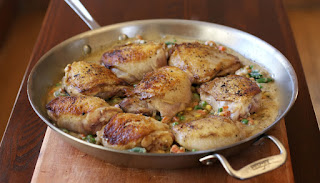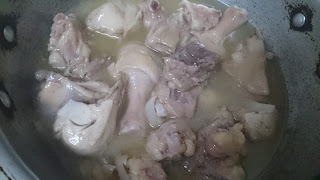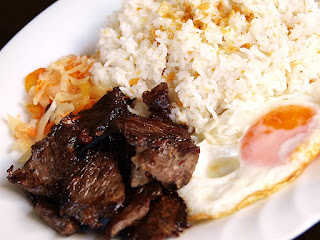Sa pag-unlad ng siyensya at teknolohiya, umuusad din ang
antas ng pamumuhay ng mga tao. Isa sa napakahalagang imbensyon ng dekada ay ang
pagpapalaganap ng information technology sa pamamagitan ng internet. Dahil dito,
mabilis na nakukuha at nalalaman ng isang indibidwal ang anumang impormasyong
hinahanap at kinakailangan kung ito ay nasa world wide web (www).
Kasunod ng pag-unlad sa teknolohiya ay ang dagdag gastos na
kinakaharap ng mga tao. Maliban sa linya ng kuryente, kailangan na rin magpakabit
ng linya ng telepono upang makagamit ng internet. Kailangan na ring bumili ng
computer, desktop man o laptop, kung hindi man smart phone o tablet.
Sa pamamagitan ng internet at ng mga social networking
portals tulad ng Facebook, Twitter, Friendster (dati), Instagram atbp., mabilis
na nagpapalitan ng larawan, bidyo, kuro-kuro, iniisip at kaalaman ang bawa’t
isa. Kaya nga huli ka sa tugtog kung wala kang account sa alinman sa mga ito.
Dahil dagdag gastos, mainam kung kikita rin ang isang user
ng internet habang nasa world wide web. Ito ay magagawa sa pamamagitan ng
pagsusulat ng isang blog.
Ano ba ang blog?
Ang blog ay maituturing na isang
diary o talaarawang
palagian o regular na nilalagyan ng kaganapan sa pamamagitan ng
formal o
informal mang uri ng pakikipagtalastasang nakatala sa world wide web o
webpage.
Kalipunan ito ng mga sulatin, larawan, bidyo o kumbinasyon ng dalawa o tatlong
medium of communication na nakasulat at nababasa ng buong mundo o piling-piling
miyembro sa isang platform. Ilan sa mga platapormang itong maaaring gamitin
upang maitala o mailathala ang isang blog ay ang
Blogger at W
ordPress.
Paano kikita ang isang blog?
Maaari kang kumita sa pagsusulat ng isang blog kapag naging
popular ito at maraming bumibisitang nag-i-internet. Kapag naaliw at nagandahan ang mga taong may
access sa computer at internet, palagian nilang bibisitahin ang isang webpage. Kapag marami ka nang naisulat, maaari ka nang makapagpatala sa
Google Adsense. Lalagyan ng Google Adsense ng mga a
dvertisement o patalastas ang iyong blog
site. Kapag ang mga
ads na ito ay nagustuhan at kinilik ng mga bumibisita sa iyong webpage, may katumbas na halaga ang bawat
click.
Paano gumawa ng isang blog?
Bago gumawa ng isang blog, dapat isipin na ito ay regular na pagsusulat. Pwede itong araw-araw na gagawin, linggo-linggo, makalawa o kahit minsan isang buwan. Kapag hindi ito magagawa, hindi ka maaaring mag-blog.
Ang unang proseso ay ang pagkakaroon ng email address. Mahalaga ito para sa pagpapatala ng iyong blog sa Blogger, Wordpress at alinmang platform.
Pumili kung saan mo ilalagay ang iyong blog. Basahin ang mga tuntunin at patakaran ng Blogger o Wordpress at pumili. Madali na rin ang paggawa ng theme, layout o anyo ng iyong blog dahil ito ay matatagpuan na rin sa platapormang iyong pinili. Ang anumang katanungan sa paggawa ng blog ay nahahanap din ang kasagutan sa internet. Mag-browse lamang gamit ang Google, Internet Explorer, Yahoo o Firefox at isulat ang iyong katanungan at lalabas na ang maaaring sagot sa iyong mga taon.
Mga Tips sa Pagsulat ng Blog
Sa pagsulat ng isang blog, pumili ng temang naaaliw ka o kaya ay gustong-gusto mong gawin o ginagawa. Dagdag pa rito ang iyong personal na interest at mayabong na kaalaman sa iyong napiling subject o paksa. Ang iyong blog ay maaaring sumasalamin sa iyong trabaho, libangan, pang-araw-araw na buhay o interest. Ang mahalaga ay marami kang naisusulat tungkol dito at ikaw ay nalilibang sa iyong ginagawa.
Kung maaari ay isulat ang iyong blog sa wikang English upang mas maraming tao ang makakabasa ng iyong blog. Maaari rin namang itong pinaghalong English at Filipino depende sa iyong paksa at target audience o mambabasa. Mainam din na gumamit na sariling larawan o bidyo. Kung hindi maiiwasang komopya ng mga larawan at video sa internet, bigyang pagpapahalaga ang may-ari nito o pinagkunan ng mga larawan at bidyo. Maaaring isulat ang link sa mismong sulatin o sa huling bahagi ng iyong isinulat.
Huwag mangopya o mag-plagiarize ng mga artikulong isinulat ng iba. Iwasan ang mag-copy & paste. Maaari kang kasuhan at i-block sa alinmang blogging site kapag ito ay iyong ginawa. Kung hindi maiiwasang sumulat ng akda ng iba, banggitin ang pangalan ng may-akda at isaloob sa quotation marks ang kanyang sinabi.
Sumulat ng artikulong nasasapanahon at universal ang tema. Kailangang ang isinulat at hindi agad-agad naluluma o napapaso sa loob ng ilang araw lamang.
Huwag susulat ng mga paksa, maglalagay ng larawan o bidyo na taliwas sa alituntunin ng Blogger, Wordpress at Google Adsense gayundin kung ito ay labag sa batas sa lugar kung saan naroroon ka. Huwag gumamit ng mga salita o maglathala ng mga rtikulo o paksang lalabag sa anti-discrimination at anti-cybercrime law o naghihikayat ng satanismo at terorismo.
Kapag tinanggap na ng Google Adsense ang iyong blog at mayroon ng mga advertisement ito, huwag sabihan ang inyong mga kaibigan o kakilala na ito ay i-click dahil invalid clicks ito at maaaring maging dahilan upang i-block kayo ng Adsense. Huwag din kayo mismong iki-click ang anumang ads sa inyong blog.
Bilang halimbawa ay bisitahin ang ilan sa aking mga blogs:
Sa mga nagnanais na matutong gumawa ng blog, isulat lamang po ang inyong mga katanungan sa comment section ng blog na ito at akin pong sasagutin sa abot ng aking makakaya.





















































